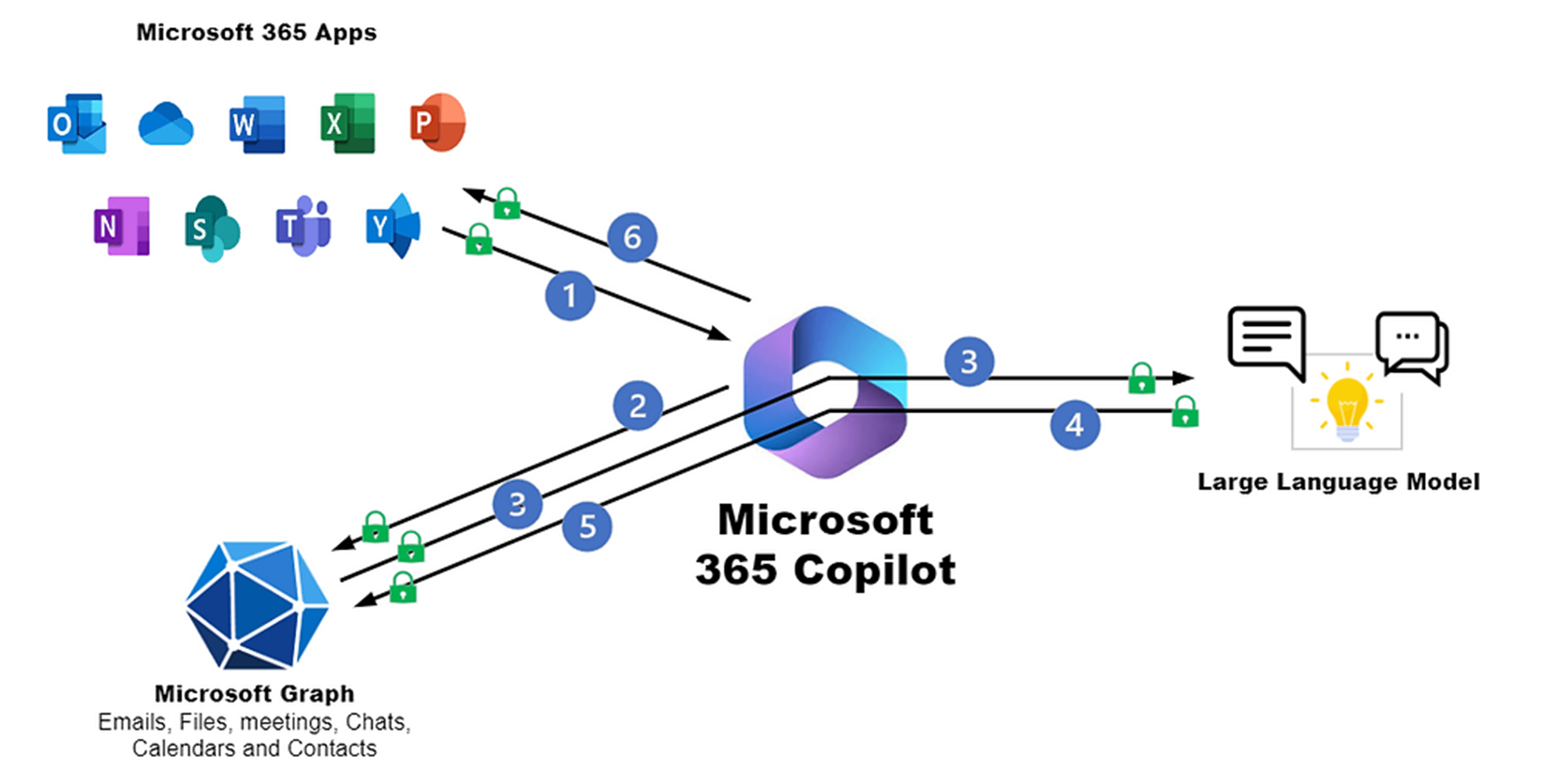Exploring the Future of Collaboration: Are You Ready for M365 Copilot?
In today’s everywhere workplace, efficient collaboration is essential for businesses to thrive. With the rise of remote work and distributed teams, organizations are constantly seeking innovative tools to streamline their workflows and enhance productivity. One such tool that has been generating buzz in the tech community is M365 Copilot, a trailblazing solution designed to revolutionize the way teams collaborate within the Microsoft 365 ecosystem.

What is M365 Copilot?
M365 Copilot is an intelligent collaboration platform developed by Microsoft that aims to empower teams to unleash creativity, unlock productivity and uplevel skills. Built on the foundation of M365, it seamlessly integrates with popular productivity tools such as Microsoft Teams, Outlook, SharePoint, and Microsoft Office applications.
At its core, M365 Copilot is a sophisticated processing and orchestration engine. It uses three foundational technologies, Microsoft 365 Apps (Word, PowerPoint, Teams, Outlook, etc.), Microsoft Graph (all your content and context in Microsoft 365 –email, files, meetings, chat, calendars), and Large Language Model, LLM for short (a creative engine capable of parsing and producing human-readable text).
Key Features & Benefits of M365 Copilot
M365 Copilot brings big benefits to organizations looking to work faster and more efficiently:
- Personalized Insights: By analyzing user interactions and data within the M365 ecosystem, M365 Copilot provides personalized insights and recommendations tailored to each individual’s work habits and preferences. Whether it’s suggesting relevant documents or highlighting upcoming deadlines, these insights help users stay organized and focused on their priorities.
- Intelligent Automation: M365 Copilot automates routine tasks and processes, saving time and reducing manual effort. From scheduling meetings to managing email correspondence, the platform uses AI-powered algorithms to streamline workflows and improve efficiency across the organization.
- Collaborative Workspace: With its seamless integration with Microsoft Teams and SharePoint, M365 Copilot provides a collaborative workspace where teams can easily communicate, share documents, and collaborate on projects in real-time. Whether it’s co-authoring documents or conducting virtual meetings, the platform fosters a culture of collaboration and teamwork.
- Enhanced Security and Compliance: As part of the M365 ecosystem, M365 Copilot adheres to industry-leading security standards and compliance requirements, ensuring that sensitive data remains protected at all times. With features such as data encryption, access controls, and audit trails, organizations can confidently collaborate without compromising on security.
Are You Ready for M365 Copilot?
As organizations embrace digital transformation and adopt modern collaboration tools, the question arises: are you ready for M365 Copilot? While the platform offers a wealth of benefits, successful adoption requires careful planning, training, and change management strategies. These steps include:
- Assess Your Organization’s Needs: Before implementing M365 Copilot, assess your organization’s unique collaboration needs, goals, and challenges. Identify key stakeholders and gather feedback to ensure alignment with business objectives.
- Invest in Training and Education: Provide comprehensive training and education to users to familiarize them with the features and capabilities of M365 Copilot. Offer ongoing support and resources to help users maximize their productivity and efficiency.
- Promote a Culture of Collaboration: Encourage a culture of collaboration and knowledge sharing within your organization. Emphasize the benefits of M365 Copilot in improving communication, streamlining workflows, and driving innovation.
- Monitor Usage and Adoption: Monitor usage metrics and adoption rates to gauge the effectiveness of M365 Copilot within your organization. Solicit feedback from users and iterate on your implementation strategy as needed to ensure continuous improvement.
Now is the Time to Start Working Smarter with M365 Copilot
M365 Copilot represents the future of collaboration within the Microsoft 365 ecosystem, offering intelligent insights, automation, and seamless integration to empower teams to work smarter and more efficiently. By embracing this innovative platform and adopting a strategic approach to implementation, organizations can unlock new levels of productivity and drive success in the digital age. Are you ready to harness the power of M365 Copilot?
Want to learn more about the impact of M365 Copilot? Check out this Work Trend Index Special Report:

Chris Hinch
Microsoft Practice Director
Wi-Fi 7: The Next Leap in Wireless Speed, Efficiency & Security
The evolution of Wi-Fi has been relentless over the past 25 years, and 2024 marked a transformative milestone with the arrival of Wi-Fi 7 (802.11be). As more devices compete for bandwidth and users expect uninterrupted, real-time performance, Wi-Fi 7 delivers a...
Microsoft Teams at Enterprise Connect 2025: Leading the Future of Collaboration
This week, Enterprise Connect took place in Orlando, and it was packed with exciting announcements from Microsoft. Ilya Bukshteyn, CVP - Microsoft Teams Calling, Devices, and Premium, delivered the keynote, highlighting several new features and updates that are set to...
The State of Email Security in 2025: How to Protect Your Users from Advanced Threats
Email: The #1 Target for Cyberattacks It’s no secret that email remains the primary attack vector for cybercriminals. Despite advancements in security technologies, attackers continue to evolve their methods—phishing campaigns, business email compromise (BEC), and...



